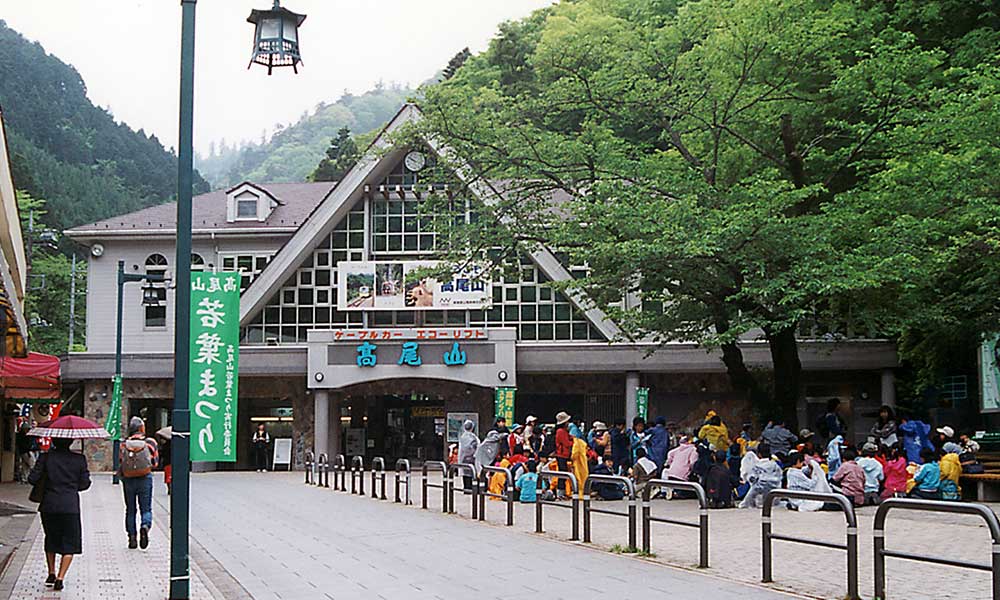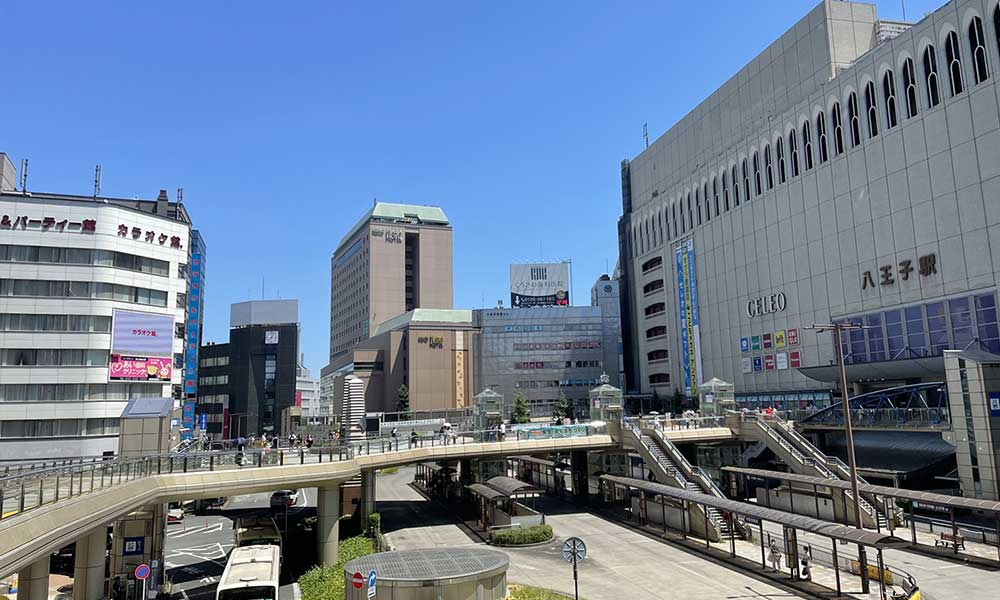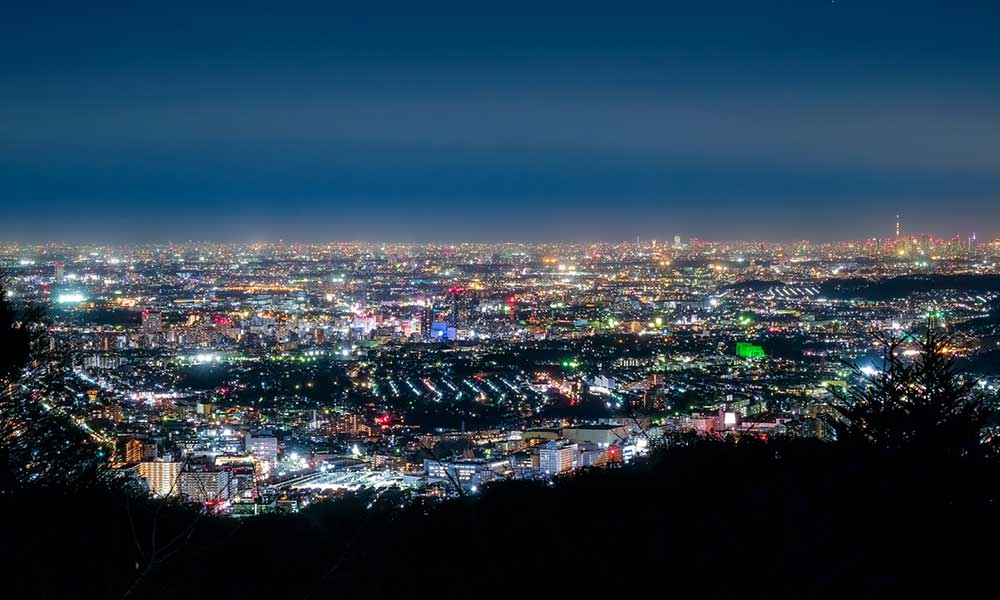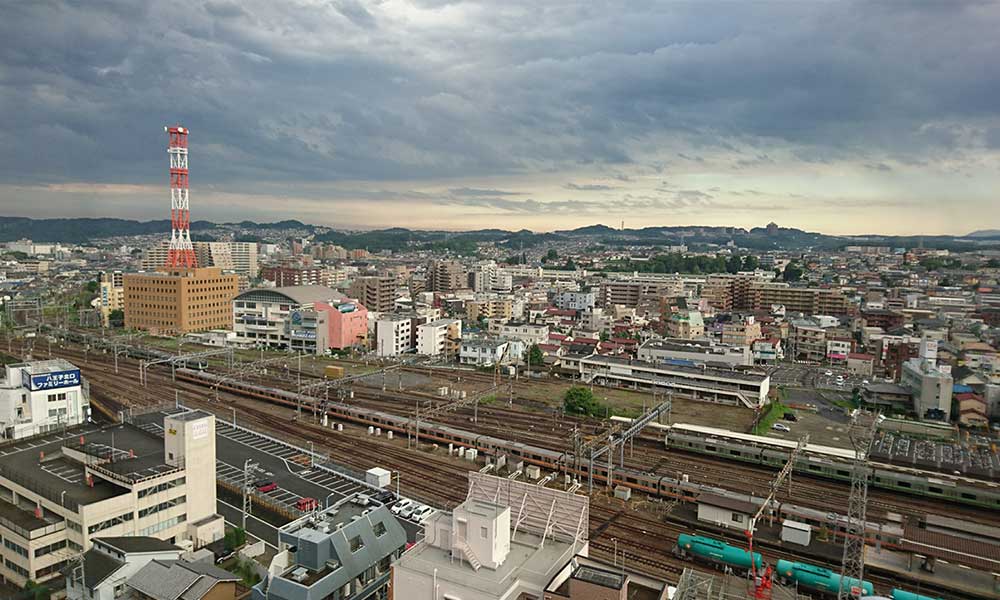Hachiouji City, Tokyo東京都八王子市
Living in Hachiouji City, Tokyo

We have Summarized the livability of Hachiouji City, Tokyo.
MINAMI AREA南多摩地域
CONTENTS
- What kind of place is Hachiouji City, Tokyo?
- Hachiouji CityPR video
- How is the traffic situation in Hachiouji City?
- How are the rent and land prices in Hachiouji City?
- How is childcare and education in Hachiouji City?
- How about shopping in Hachiouji City?
- How about jobs and recruitment in Hachiouji City?
- Hachiouji City’s unique subsidy/subsidy system
What kind of place is Hachiouji City, Tokyo?

Hachioji is a big city surrounded by nature and rich in culture and tourism.
Hachioji City is located in the southern part of the Tama region of Tokyo, and has an area of approximately 186.38 square kilometers.
It borders Akiruno City and Fussa City to the north, Akishima City, Hino City, and Tama City to the east, Machida City to the south, and Sagamihara City and Hinohara Village to the west.
It has a population of approximately 561,000 and approximately 279,000 households. (As of March 2023)
The city is characterized by a generally flat basin-like topography, with hills to the east and mountains to the west.
Hachioji City’s history dates back to the Edo Period, when it developed as a castle town of Takiyama Castle and Hachioji Castle, and as a post town on the Koshu Kaido road, with people coming and going.
Sericulture and textile industries have flourished since ancient times, and in the Meiji Period it developed further as a commercial and industrial town centered on silk textiles and raw silk. The opening of the Kobu Railway in 1889 led to the rapid modernization of the city.
After the war, the area was hit hard by the Great Hachioji Air Raid, and land was redeveloped in the burnt-out area.
Today, Hachioji City has developed into a region with many downtown areas lined with commercial facilities, station buildings, and shopping streets, centered around Hachioji Station.
In recent years, it has been actively attracting university campuses seeking large tracts of land, and it is also one of the leading university towns in the country, with approximately 110,000 students studying there.
The most famous tourist spot in Hachioji City is undoubtedly “Mount Takao“.
It is relatively close to the center of Tokyo and is famous as a mountain where you can enjoy casual hiking. On the mountainside, there is the “Mount Takao Cable Car” and “Echo Lift” that extend to the summit. There are also tourist areas such as “Mount Takao Beer Mount” where you can enjoy a beer garden in the summer and “Mount Takao Yakuoin Temple“, and it is a popular spot visited by many visitors every day.
In addition, “Keio Takaosan Onsen Gokuraku-yu,” located just a short distance from the nearest station, Keio Takaosanguchi Station, is a popular facility where you can relax after a long day of hiking.
Held in the same area every March is the “Takaosan Firewalking Festival.” This is a famous event at Mount Takao and is also known as the Firewalking Festival. The vigorously burning flames and the powerful ritual are a sight to behold, and the climax is the “Kasho Sammai” ritual, in which ascetic monks walk barefoot over the fire. The firewalking is open to the public, but it is a very popular event that sees long queues every year.
PR video of Hachiouji City, Tokyo
Hachioji City Promotional Video “Hachioji, a city where you can walk your own path”
Hachioji City Promotional Video “Colorful Life”
UP! Hachioji Episode.1 Just have fun in Hachioji
UP! Hachioji Episode.2 It’s great! Hachioji Ramen!
How is the traffic situation in Hachiouji City, Tokyo?

Hachioji City has well-developed railway and bus services, and offers easy access to the city center.
There are 9 train lines and 22 stations in Hachioji city.
It takes about 51 minutes from Hachioji station to Tokyo station and about 40 minutes to Shinjuku station.
| Hachioji Station | JR Yokohama Line・JR Chuo Line・JR Hachiko Line |
| Takaosanguchi Station | Keio Takao Line |
| Takao Station | JR Chuo Line |
| Kitano Station | Keio Line・Keio Takao Line |
| Takaosan Station | Takao Tozan Railway Takao Tozan Cable |
| Hachioji Minamino Station | JR Yokohama Line |
| Minami-Osawa Station | Keio Sagamihara Line |
| Keio Hachioji Station | Keio Line |
| Hazama Station | Keio Takao Line |
| Keio Horinouchi Station | Keio Sagamihara Line |
| Komiya Station | JR Hachiko Line |
| Nishi-Hachioji Station | JR Chuo Line |
| Kita-Hachioji Station | JR Chuo Line・JR Hachiko Line |
| Otsuka-Teikyo University Station | Tama Monorail |
| Katakura Station | JR Yokohama Line |
| Chuo University-Meisei University Station | Tama Monorail |
| Mejirodai Station | Keio Takao Line |
| Yamada Station | Keio Takao Line |
| Matsugaya Station | Tama Monorail |
| Keio Katakura Station | Keio Takao Line |
| Kiyotaki Station | Takao Tozan Railway Takao Tozan Cable |
Nishitokyo Bus, Keio Dentetsu Bus, Keio Bus, and Kanagawa Chuo Kotsu are the bus companies that run through Hachioji City.
There is also a community bus called “Hachi Bus” that can take you to major facilities in Hachioji City.
From around Hachioji Station, the center of Hachioji City, there are express buses that can take you to further destinations such as the Kinki region, and limousine buses that can take you to Haneda Airport and Narita Airport.
There are two expressways accessible from Hachioji city, with three entrances and exits.
| Hachioji IC | Chuo Expressway |
| Hachioji West IC | Metropolitan Intercity Expressway |
| Takaosan IC | Metropolitan Intercity Expressway |
National highways that pass through Hachioji City include National Highway 20, which runs from Chuo Ward, Tokyo, through Kanagawa and Yamanashi Prefectures to Shiojiri City, Nagano Prefecture; National Highway 16, which starts and ends in Yokohama City, Kanagawa Prefecture, and is a general national highway that connects the metropolitan area in a circular route; and National Highway 411, which runs from Hachioji City, Tokyo, through Okutama Town, Nishitama District, to Kofu City, Yamanashi Prefecture.
There is a good railroad system, and access to central Tokyo and Kanagawa Prefecture is good. Many national and prefectural roads pass through the area, and travel by car is also easy.
There are times when trains are crowded, which can be inconvenient when commuting to work or school. Road conditions in Hachioji are poor, and there are areas where traffic jams are likely to occur.
What are the average rent, housing, and land prices in Hachiouji, Tokyo?

Hachioji City is a pleasant place to live with a wide variety of residential areas, parks and nature nearby.
According to information from a real estate information website, the average rent in the ward for a newly built apartment within a 10-minute walk from the station is about 71,000 yen for a 1K and 97,000 yen for a 2DK.
The average land price is about 517,000 yen per tsubo.
The average price of a newly built apartment is 39.62 million yen, the average area is 63.55 m2, and the average price per tsubo is 2.061 million yen per tsubo. (As of 2018-2022)
There are various types of housing in Hachioji City, including detached houses, condominiums, apartments, and rental housing. In particular, Hachioji City has a lot of greenery and many residential areas surrounded by nature, making it popular with people who want to live in an environment where they can be in contact with nature.
Rent and prices in Hachioji City tend to be relatively cheaper than in central Tokyo. Prices of detached houses and apartments are also relatively reasonable, so it is chosen by people who live with their families and people who own real estate for long-term investment purposes. Additionally, Hachioji City has large commercial facilities and hospitals, making it a comfortable place to live with all the facilities you need.
It has good access to central Tokyo, is convenient for commuting to work or school, and rent is relatively low.
The area around the station is small and there are few parking spaces, which can be inconvenient for people who own cars.
What is child-rearing and education like in Hachiouji City, Tokyo?

Hachioji City is a city with well-developed educational institutions, child-rearing support, and local events.
Hachioji City has 89 nurseries, 32 kindergartens, 71 elementary schools, 47 junior high schools, 20 high schools, 24 junior colleges and universities, and 8 vocational schools.
Hachioji City’s pediatric medical expenses subsidy covers the full cost of outpatient and inpatient care for infants and toddlers covered by the “Infant Medical Expense Subsidy System” (until the first March 31st after reaching age 6).
Children aged 7 to 18 years old covered by the “Compulsory Education Children’s Medical Expense Subsidy System / High School Student Medical Expense Subsidy System” (until March 31st after reaching age 18) are eligible for subsidies for outpatient care with the amount of insurance medical expenses deducted up to a maximum of 200 yen per visit, and are eligible for full subsidies for prescriptions, hospitalization, and home care.
Child allowances are: 15,000 yen for children under 3 years old, 10,000 yen for the first and second child aged 3 or older but not yet entering elementary school, 15,000 yen for the third child and onwards, and 10,000 yen for junior high school students.
Hachioji City also has its own unique support system.
Hello Baby Support is a relatively low-cost child-rearing support service where helpers visit families in need and provide support with housework and child-rearing.
The Postpartum Care Service is a paid support service where midwives support mothers after giving birth. There are both overnight and home visit services, and it is a wonderful service that helps mothers to feel safe after giving birth by taking care of the baby and the mother’s physical condition.
“Childcare Plazas” are places where mothers and children up to 3 years old can play together and make friends. There are 11 “Parent-Child Interaction Plazas” and “Parent-Child Gathering Plazas” in the city, where staff can provide advice on childcare and related courses and events are also held. In addition, daycare centers and children’s centers in the city also open parts of their facilities as childcare plazas, and there are plenty of facilities where parents and children can play together.
To support local children, there are “children’s cafeterias” that provide meals for free or at low cost to children, and “free cram schools” that provide study help for motivated children from financially disadvantaged families.
Hachioji City has many municipal daycare centers, kindergartens, and certified childcare centers. There are also private daycare facilities, so the childcare environment is excellent. In order to address the problem of children on waiting lists, new daycare centers are being built and more are being added.
Childcare support facilities are available, and childcare consultations and information are provided. Events and courses for parents raising children are also held, so the environment is in place to support childcare.
The city is also blessed with a rich natural environment. There are many parks, walking trails, mountains, and rivers in the city, so you can raise your children in nature.
The education environment is also excellent, with many schools in development. There are also private schools, so there are a variety of options when choosing a school.
There are many facilities necessary for raising children, such as children’s centers and childcare support centers. In addition, the city has put effort into improving its educational environment, and many schools have been established.
There tends to be a large number of children on waiting lists for nursery schools.
How about shopping in Hachiouji City?

Hachioji City: A city with a wide range of commercial facilities and shopping areas
The area around Hachioji Station, the center of Hachioji city, is a fun place to shop, with large commercial facilities lined up, including the station building “Celeo Hachioji,” “Hachioji Octore,” and “Keio Hachioji Shopping Center.”
In addition, Mitsui Outlet Park Tama Minami-Osawa is located just a short walk from Minami-Osawa Station on the Keio Sagamihara Line, and in a beautiful building reminiscent of the streets of southern France, you can get brand-name goods at low prices. Since there is a large university nearby, it is a popular facility that is bustling with students every day.
Roadside Station Hachioji Takiyama is located 980m from Hachioji IC on the Chuo Expressway, and is easily accessible by car. You can purchase fresh local vegetables and fruits, and enjoy a menu made with local ingredients at the food court attached to the roadside station. It is always crowded, and the parking lot is always full on holidays.
In addition, Hachioji city has about 52 stores, including Super Alps, Berg, and Yaoko.
As such, Hachioji city is a convenient area where you can choose from a variety of shopping facilities to suit your needs.
There are many shopping facilities, such as shopping malls, local shopping streets, and supermarkets, and a wide range of products are available, making it convenient for shopping.
The shopping facilities are very popular and can get crowded on weekends.
How about jobs and recruitment in Hachiouji City?
Hachioji City has a wide variety of job opportunities and good access to the city center
The average annual salary in Hachioji is 3.7 million yen.
Hachioji offers a wide range of jobs, including manufacturing, education-related industries, medical and welfare, retail, and service industries. In recent years, the city has been actively attracting universities, and there is high demand for education-related jobs, leading to a tendency for there to be many jobs.
In addition, many companies have set up shop in the textile industry, which is famous as a local industry in Hachioji, as well as in the printing and precision machinery industries, so you can expect to find jobs in related industries.
There are job openings in a wide variety of fields, including manufacturing, education, medical and welfare, retail, and services.
There are many job openings, but at the same time, there are also many applicants, and competition for positions tends to be high.
Hachiouji City, Tokyo’s unique assistance and subsidy system
Hachiouji City, Tokyo’s unique assistance and subsidy system
Hachiouji City, Tokyo’s unique childcare support system
| Childbirth and Childrearing Support Grant Program Support program for families with multiple children (transportation support) First Birthday Support Program |
Hachiouji City, Tokyo’s unique system for further education and tuition assistance and subsidies
| School attendance assistance system Subsidies for students and children using public transport to commute to school Scholarship system (high school, etc.) |






